Erik Visits an American Grave, Part 636
This is the grave of Winslow Homer.
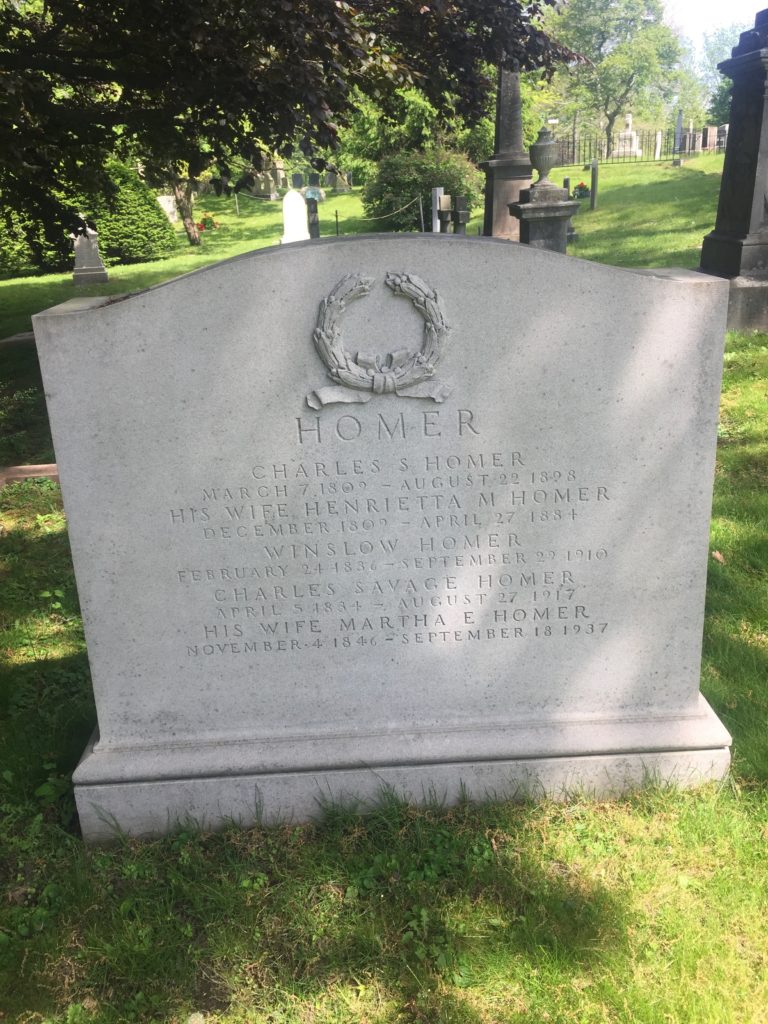
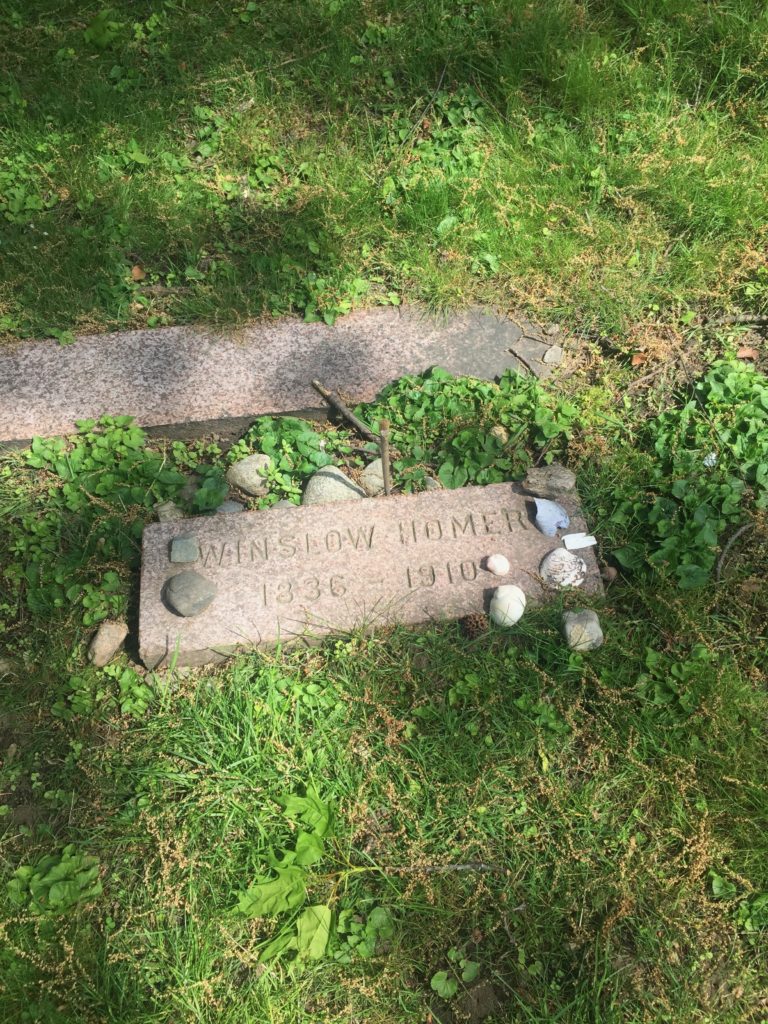
Born in 1836 in Boston, Homer came from an old New England family. His mother was a talented amateur artist and gave Winslow his first lessons. But his father was, like many Americans of this generation, restless and desperate to get rich quick. In 1849, like so many others, he chased gold in California and like almost everyone, totally failed. He took the family to Europe to raise more money and try more get rich quick schemes. So it was a peripatetic childhood, though he recalled being fairly happy.
When Homer was 19, his father had him apprenticed to a lithographer and quickly showed a lot of talent. In fact, Harper’s tried to get him to work for them just a couple of years later. But Homer turned the already famous magazine down and became a freelancer, often in fact selling his work to Harper’s. He did this for about 20 years, making a good living as an illustrator.
By 1859, Homer was doing well enough to open a studio in New York City. He got a lot of sketch work of Civil War battles for Harper’s and started teaching himself to paint and showing a tremendous amount of talent for it, getting positive reviews and selling his work, which was a often either Civil War scenes or nostalgic looks at childhood. Finally, in 1867, he went to Paris for formal training. One of his Civil War paintings was already on display there. He stayed for about a year before returning to New York. He painted fairly straightforward rural scenes through the 1870s, depicting everyday people. This included African-Americans after a trip to Virginia. He started working heavily with watercolors by 1873. He also began becoming something of a hermit. He had a lot of problems with women and perhaps became depressed as a result of it. In any case, he started spending large amounts of time in Gloucester, Massachusetts, including living for awhile in a lighthouse, and that’s where he started painting seascapes on a regular basis.
In 1881, Homer went back to Europe, this time to London. There, his art really matured and when he came back after painting a bunch of scenes of English working class life, the reviewers were raving about how great he had become. He moved to Maine, where his family had a home, and started painting his most famous sea paintings. Interestingly given how beloved he is today, he was much more of a critical than a commercial darling at the time. Perhaps because he avoided society, he struggled to sell his sea paintings and it sometimes took years to sell them. The American buying public was more taken with John Singer Sargent’s portraits at the time. Sargent served the Gilded Age elites’ desire for recognition while Homer was on his own trajectory and mostly disliked those people. In fact, by this time, he rarely saw people other than his own family. But they convinced him to start going to the tropics and he did by the mid-1880s, painting quite a bit in the Bahamas, Cuba, and then Key West for most of the rest of his life.
At the very end of the nineteenth century, Homer’s painting started to sell and he became financially stable for the first time, getting to enjoy a little fame in his last years. He painted up to the point he died, which was in his studio, in 1910 at the age of 74.
I’m not real great at talking about art, so let’s look at a few of Homer’s works.
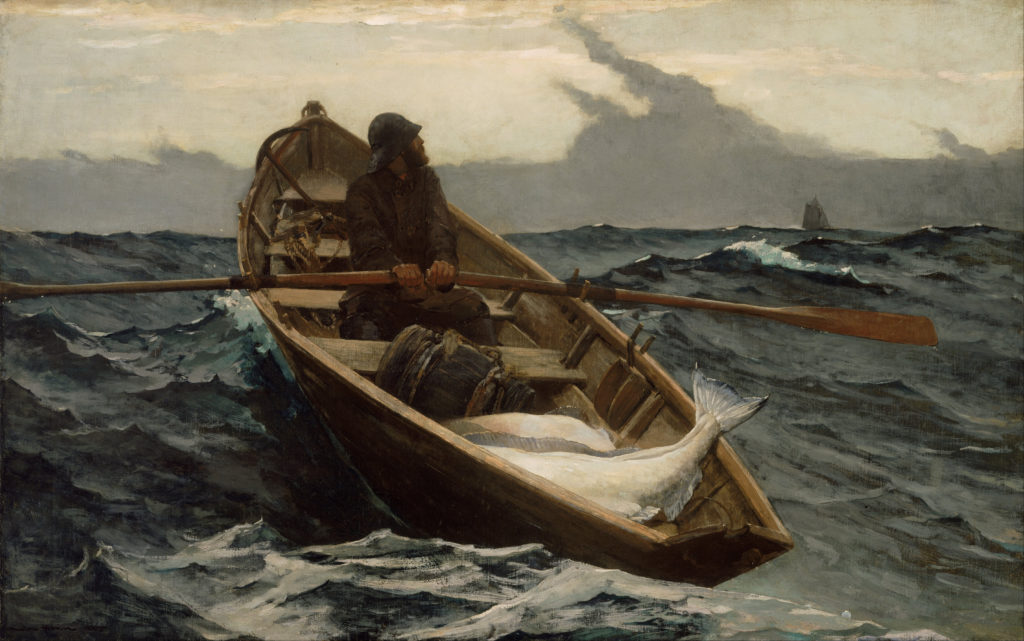

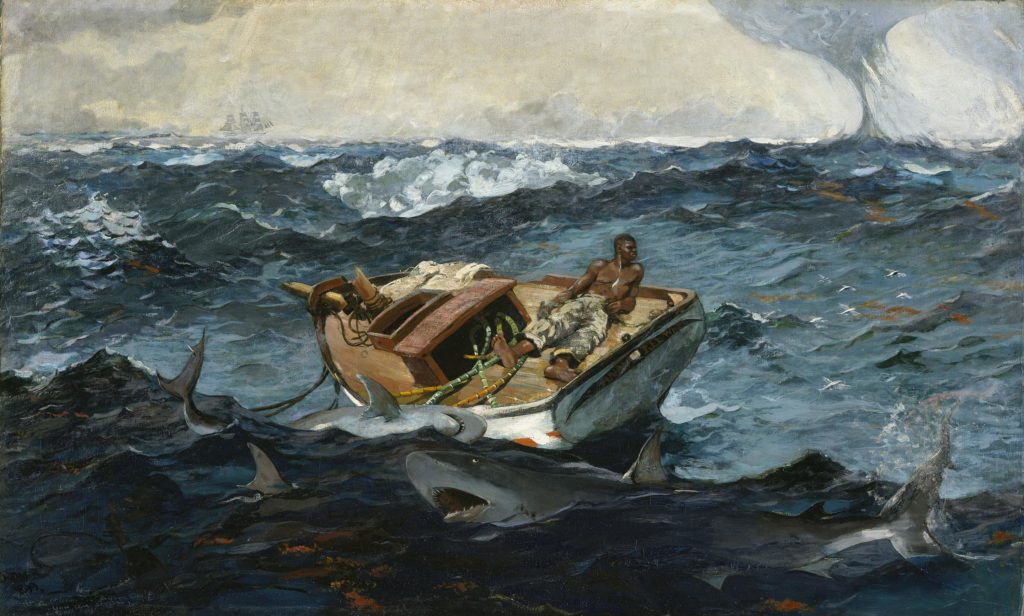

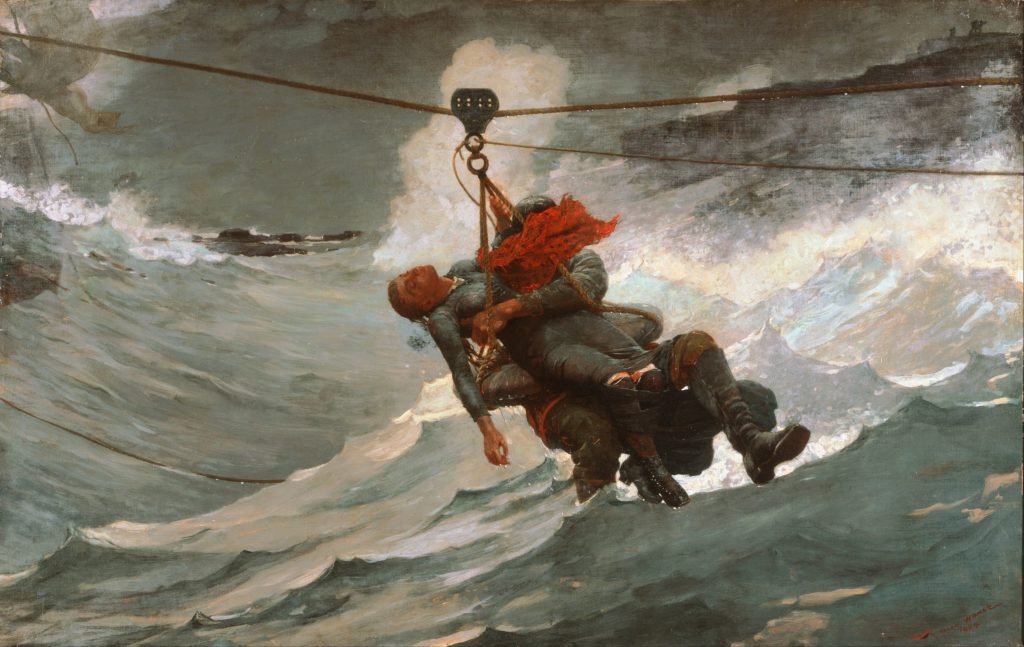
Winslow Homer is buried in Mount Auburn Cemetery, Cambridge, Massachusetts.
If you would like this series to visit other artists of the Gilded Age, you can donate to cover the required expenses here. Childe Hassam is in East Hampton, New York and Cecilia Beaux is in Bala Cynwyd, Pennsylvania. John Singer Sargent is in London if you really want to send me there. Previous posts in this series are archived here.


